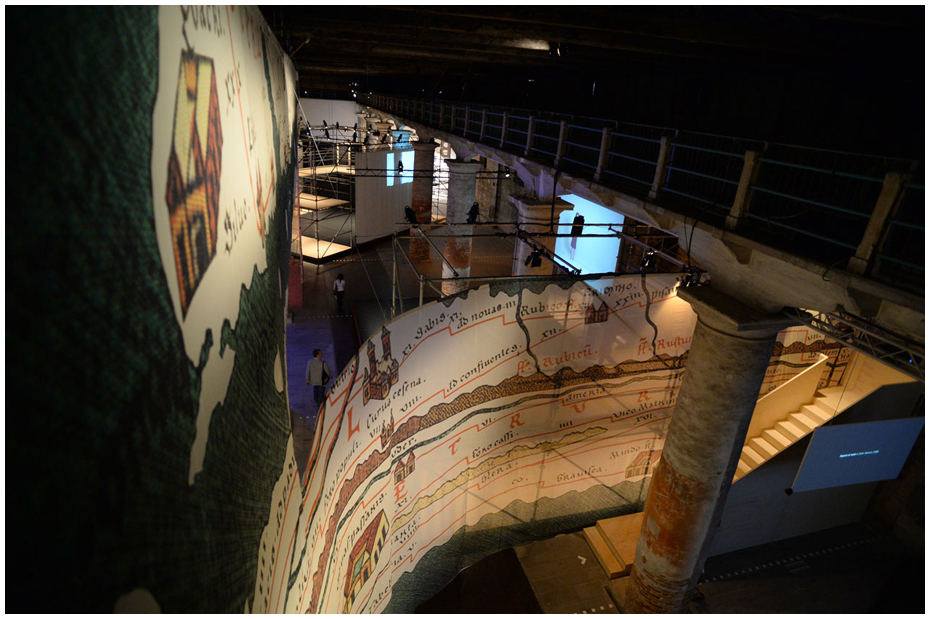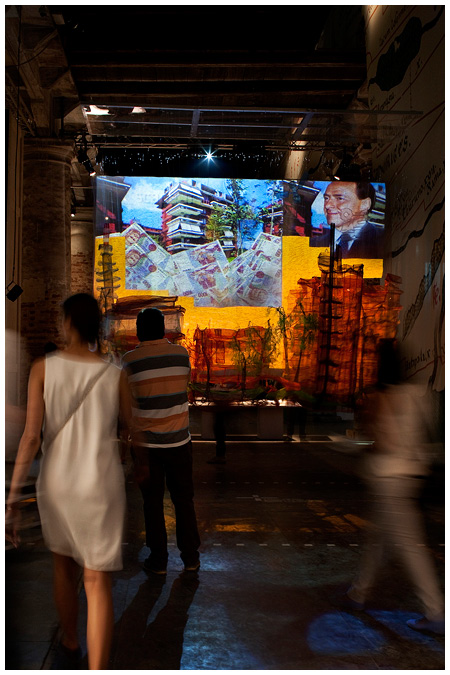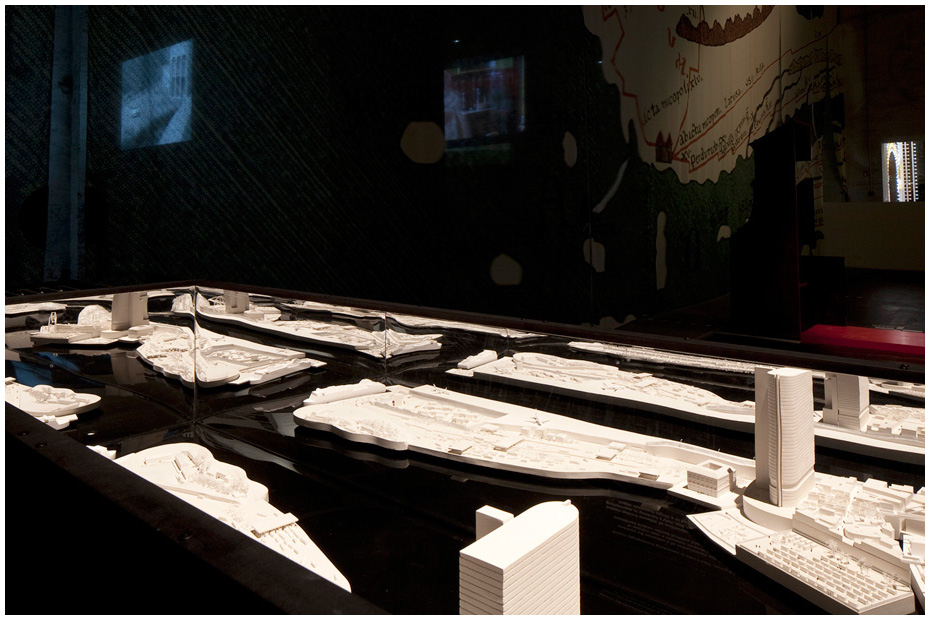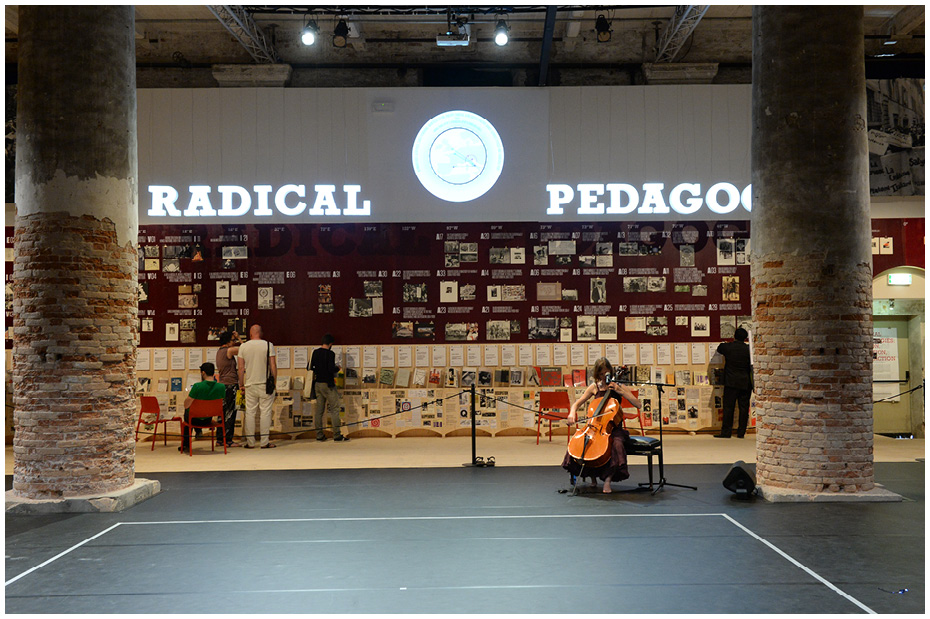Eleonora Usseglio Prinsi unravels the complex social and political themes in Monditalia at the Venice Biennale

The Tabula Peutingeriana, a map from the 5th century AD showing the expanse of the Roman Empire, guides the visitor along the exhibition at the Arsenale spaces as part of the Venice Architecture Biennale. A sweeping scan of Italy’s territories from North to South, the exhibition is composed of a series of movies, theatre and dance performances and installations, presenting an engaging insight into the complex panorama of Italy’s recent past, and contemporary situation organised by geographical co-ordinates.Monditalia “forms a comprehensive portrait of the host country” that explores the contradiction that Italy was able to, simultaneously, be the stage for some of the highest and the poorest cultural expression. “We take Italy as an emblematic case, a paradigm to analyse phenomena regarding the whole western world” explains the exhibition designer Ippolito Pestellini, “Italy seen in a very extended network of relations”. Here, we take a look at three of the most controversial research projects, and their symbolic portrayal of the different faces of the Italians’ evolution and influence.
Sales Oddity, Milano 2 and the Politics of Home-to-Home TV Urbanism – Andre Jaque
An ephemeral fabric model hanging in front of a screen is the materialization of disgraced former-Prime Minister Silvio Berlusconi’s rhetoric, pulled from his powerful half-century career. The installation by Spanish architect Andre Jacque analyses Berlusconi’s involvement with the media, politics and in designing a new idea of Italy.
Milano 2, pitched as la Città dei Numeri Uno (the City of the Number Ones), is a 1980s housing complex that was designed to house a “class of young, family-oriented executives”, working in the newly established branches of multinational companies like IBM and Siemens – the “Number Ones”. Milano 2 wanted these “Number Ones” of Italian society, the Number One’s in consumption. They had no past; only a future and Berlusconi made himself the director of their future.
The basement of Milano 2 was the birthplace of the Berlusconi Television Empire. Originally a fledging, underground cable television network, in time it flourished and became Mediaset, the largest commercial broadcaster in Italy today. “Milano 2 is the single clearest example of how urbanism was directed by the fortunes of the television industry”, said the curator.
The sharpy research, directed by Andres Jacque and his Office for political innovation, explored how this housing complex became an icon of a new phenomenon of TV urbanism that characterized the post-war European reconstruction.

“Milano 2 is the single clearest example of how urbanism was directed by the fortunes of the television industry”

Post-frontier – Giacomo Cantoni, Pietro Pagliaro
The meridional frontier is a topic of contention for Italy. “The central Mediterranean route of migration” is Africa’s door into Italy. It is an issue that involves social and political forces that shape the Italian coast as territories respond to this immigration phenomenon.
The installation by Giacomo Cantoni and Pietro Pagliaro is composed of three elements that together tell a story, but at the same time maintain their independence.
“It is an issue that involves social and political forces that shape the Italian coast”
The first, a video interview with Eva Moncure from Frontex, the European agency assisting member states at the external borders of the EU, presents the institutional vision of the immigration problem. Along side this video is the second element, six pictures from photojournalists living in the villages of the Mediterranean border that act as a direct testimony challenging the institutional certainties about the nature of the immigration problem in Italy.
The third element is a plaster model that merges together fragments of landscapes from diverse countries to create an imaginary coast that combines urban elements in different ways to express what a border means. It is accompanied by audio-collage of sounds of border checks, airports and customs.

Radical Pedagogies: ACTION-REACTION-INTERACTION – Beatriz Colomina, Britt Eversole, Ignacio G. Galán, Evangelos Kotsioris, Anna-Maria Meister, Federica Vannucchi, Amunátegui Valdés Architects
Where is architecture pedagogy today? This question is the starting point of a project by Beatriz Colomina at Princeton University entitled Radical Pedagogies: ACTION-REACTION-INTERACTION. The project explores the need to create a new architectural pedagogy able to support and teach students how to approach the ever-changing world around them. It hopes to reconstruct the relations between radicalisms and architectural education, inspired by the work of architects like Lina Bo Bardi and Aldo Rossi in the 60s and 70s.
The experimentation that took place globally in the post-war world grew out of the ideas of Italian architects like Aldo Rossi in La Esquelita in Argentina. The installation brings together a selection of 33 projects that reframed architecture; its teaching, and its engagement with society.
“It hopes to reconstruct the relations between radicalisms and architectural education”
Colomina’s team have created a bold wall display in the core of the Arsenale exposing the radical years in Italy that spread throughout the world. The wall exhibits a diverse collection of old photos, drawings, magazines, posters and books from major architectural protagonists of the period including Giancarlo de Carloand and Ludovico Quaroni. Anna Maria Meister, a researcher for the project explained how the 64 case studies all share a common belief: “the thought that from that point in time it was possible reshape and rethink not just architecture but also society from and through architecture education”.




